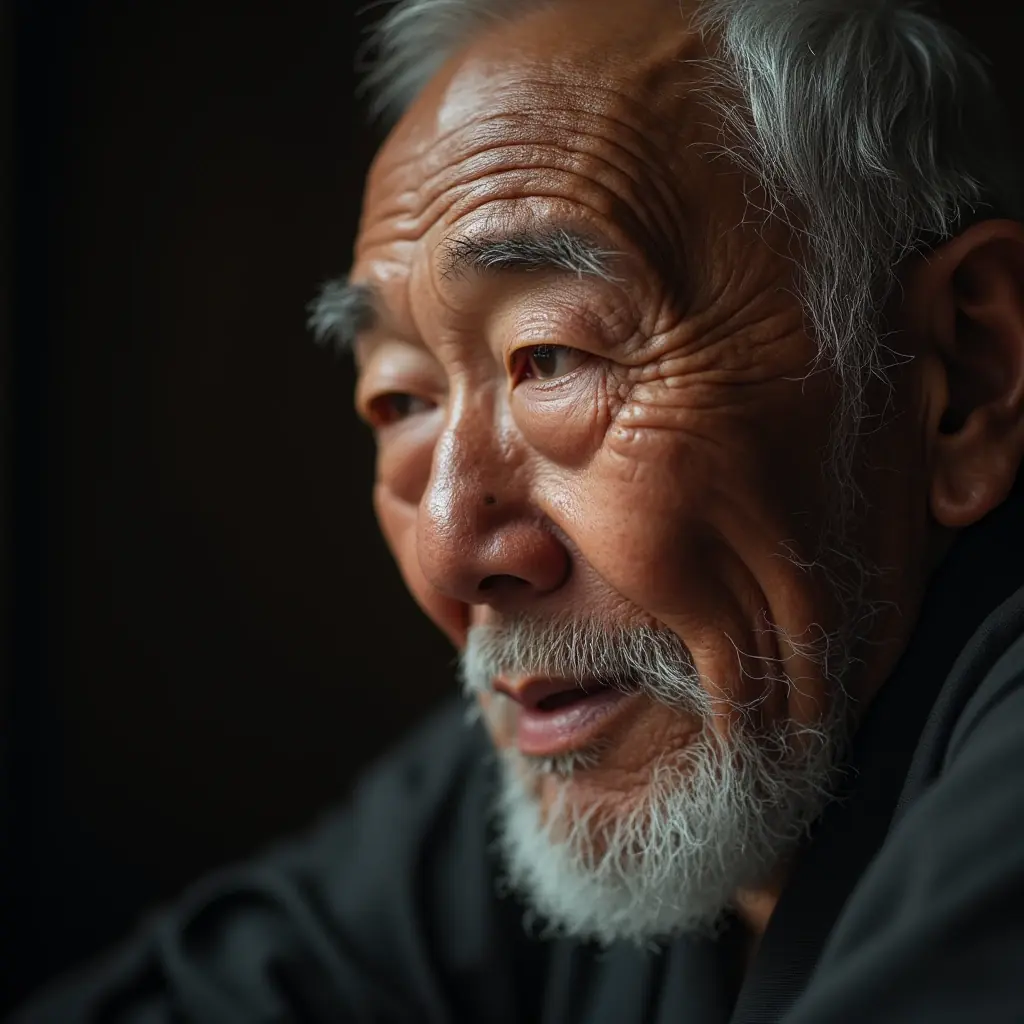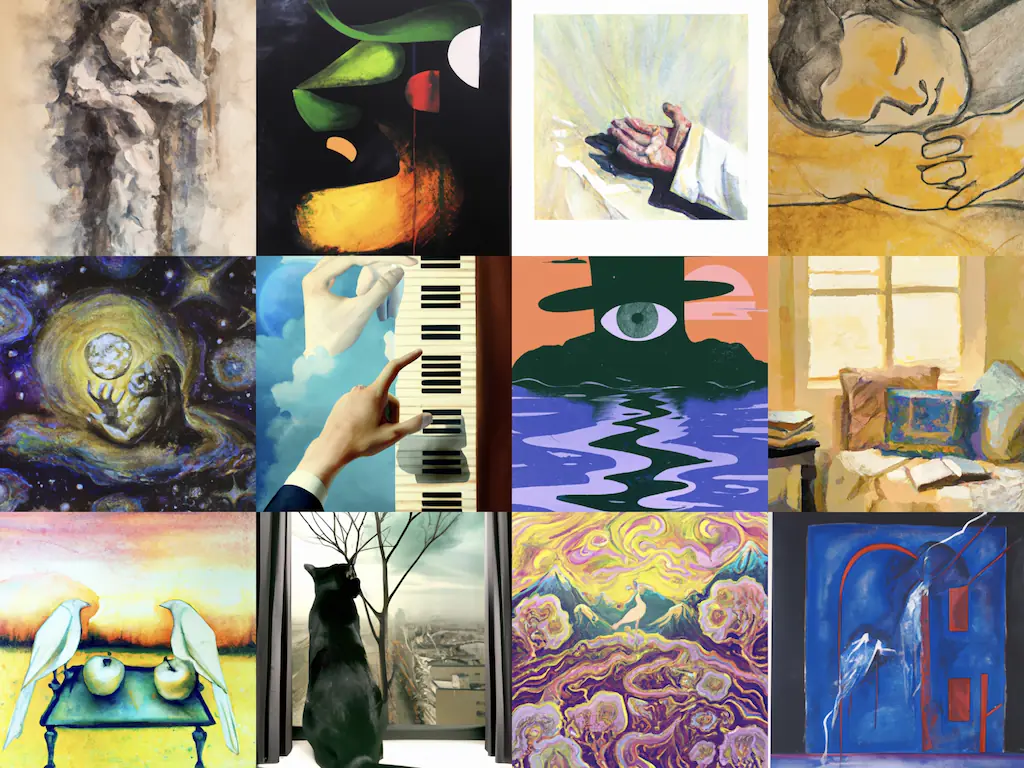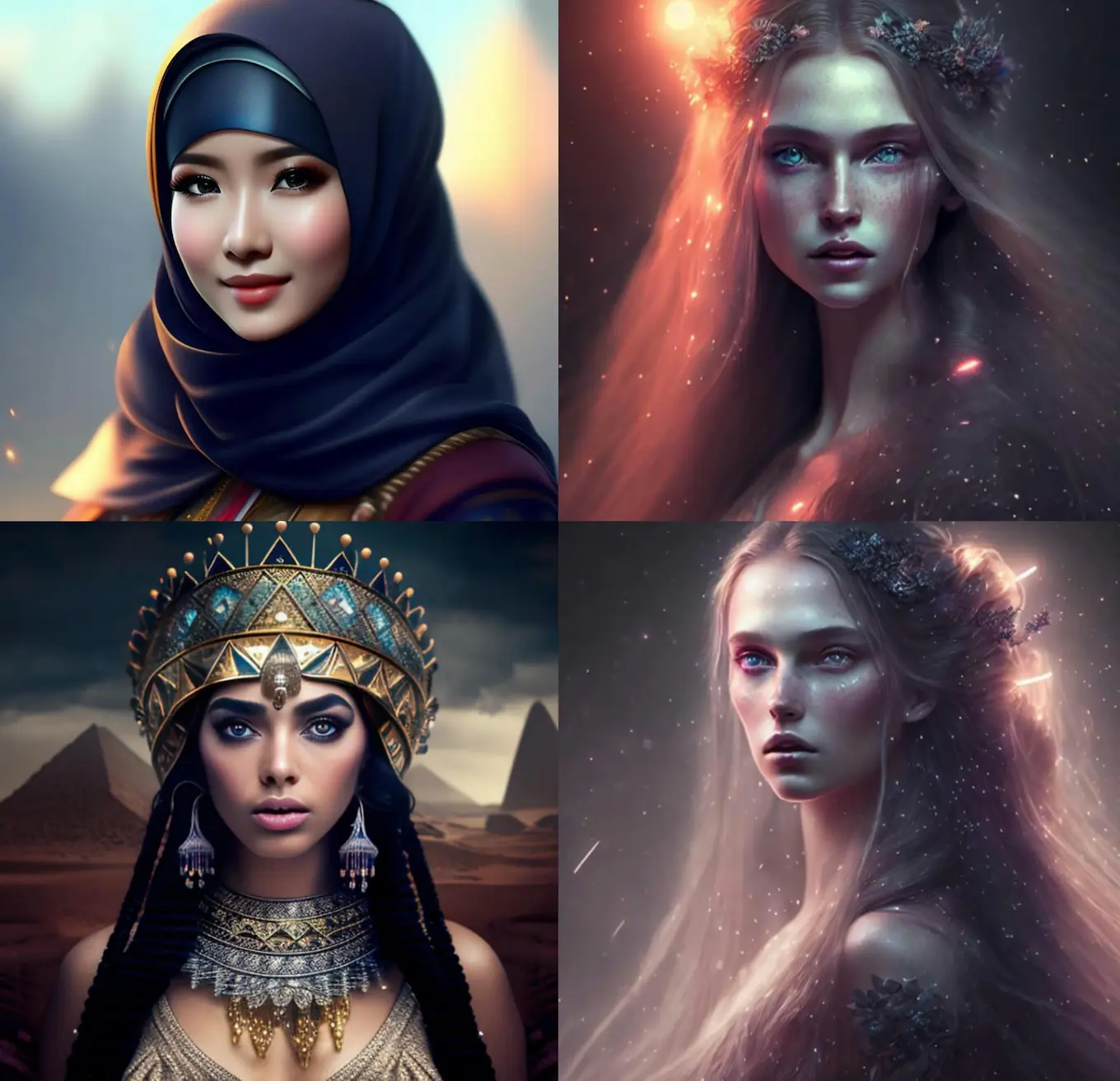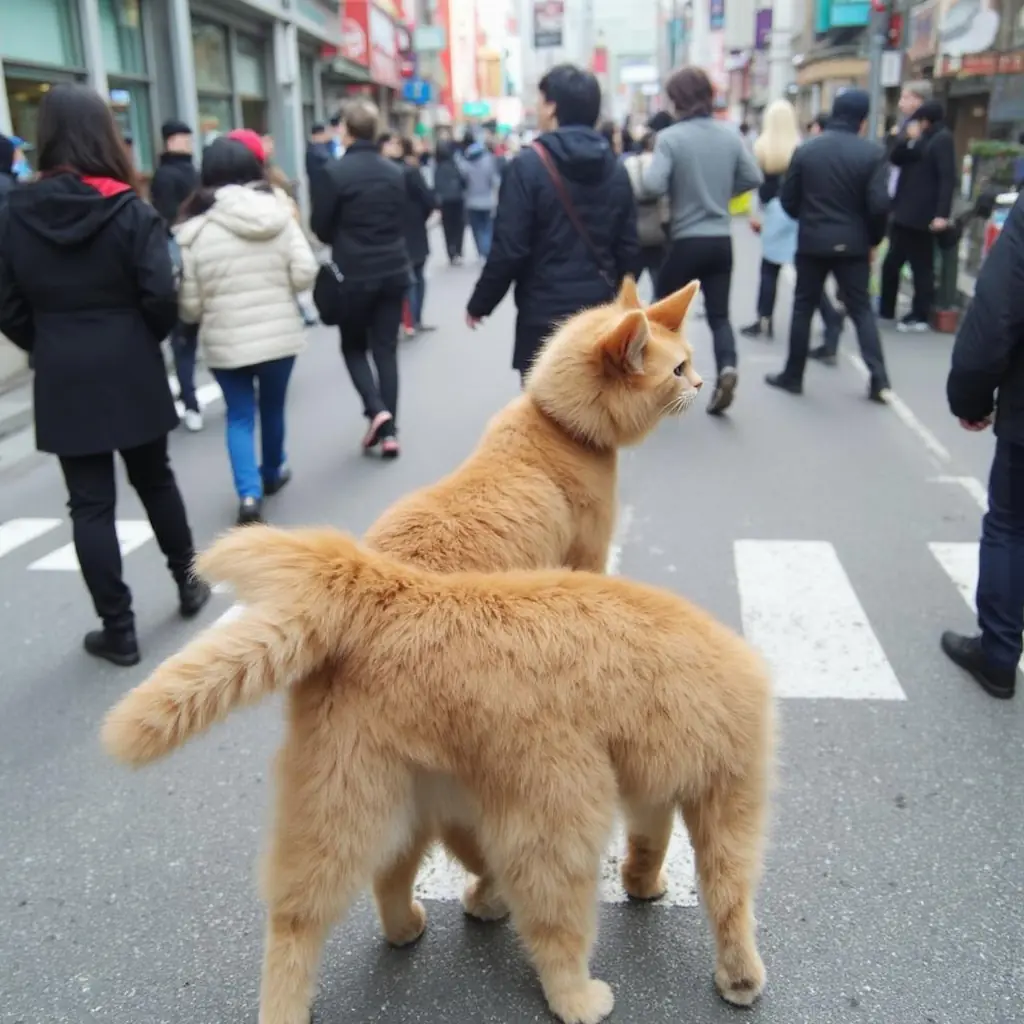Releasing Open Weights for FLUX.1 Krea
Sangwu Lee, Erwann Millon 31 July, 2025Today, we're releasing an open version of Krea 1, our first image model trained in collaboration with Black Forest Labs to offer superior aesthetic control and image quality. This checkpoint is a guidance distilled model fully compatible with FLUX.1-dev allowing seamless integration with the existing ecosystem. FLUX.1-Krea [dev] has been distilled to match the quality of Krea 1 with a focus on preserving aesthetics and photorealism.
Unlike most image models, FLUX.1 Krea has been created with opinionated aesthetics in mind. We focused on creating a model that truly fits our specific aesthetic preferences. In this technical report, we'll share the process and learnings from developing this model, including insights on pre-training and post-training, as well as future research directions.
“White owl, close up portrait, mysterious ghost like owl, low contrast, cinematic dark moody photo, slight blue color grading”
Breaking down the “AI Look”
“When a measure becomes a target, it ceases to be a good measure”
Image generation has come a long way since the early days of generating cats and flowers with GANs. Today's models can generate coherent human faces, limbs, and hands. They understand exact quantities, render complex typography, and make an astronaut ride a horse.
However, a clear trend when working with AI generated images is their unique look: overly-blurry backgrounds, waxy skin textures, boring composition, and more. Together, these problems constitute what is now known as the “AI look” .



People often focus on how "smart" a model is. We often see users testing complex prompts. Can it make a horse ride an astronaut? Does it fill up the wine glass to the brim? Can it render text properly? Over the years, we have devised various benchmarks to formalize these questions into concrete metrics. The research community has done a remarkable job advancing generative models. However, in this pursuit of technical capabilities and benchmark optimization, the messy genuine look, stylistic diversity, and creative blend of early image models took a backseat.

Our goal from the beginning was simple: "Make AI images that don't look AI." As users of generative AI ourselves, we wanted to create a model that addressed these issues. Unfortunately, many of the academic benchmarks and metrics are misaligned with what users actually want.
For the pre-training stage, metrics such as Fréchet inception distance (FID) and CLIP Score are useful for measuring general performance of the model since most images at this stage are incoherent. Beyond the pre-training stage, evaluation benchmarks such as DPG , GenEval , T2I-Compbench , and GenAI-Bench are widely used to benchmark academic and industry models. But, these benchmarks are limited to measuring prompt adherence with focus on spatial relationships, attribute binding, object counts, etc.
For evaluating aesthetics, models such as LAION-Aesthetics , Pickscore , ImageReward , HPSv2 are commonly used, but many of these models are finetuned variants of CLIP , which processes low-resolution images (224×224 pixels) with limited parameter count. As the capability of image generation models has increased, these older aesthetic score models are no longer good enough to evaluate them.
For instance, we find that LAION Aesthetics — a model commonly used to obtain high quality training images — to be highly biased towards depicting women, blurry backgrounds, overly soft textures, and bright images. While these aesthetic scorers and image quality filters are useful for filtering out bad images, relying on these models to obtain high quality training images adds implicit biases to the model's priors.

While better aesthetic scorers based on vision language models ([1], [2]) are emerging, the issue remains that human preference and aesthetics are highly personal. They cannot be easily reduced to a single number. Advancing model capabilities without regressing towards the “AI look” requires careful data curation and thorough calibration of model outputs.
The art of mode collapse
“The sculpture is already complete within the marble block, before I start my work. It is already there, I just have to chisel away the superfluous material.”
Training an image generation model can be roughly divided into two stages: pre-training and post-training. Most of the aesthetics of a model are learned during the post training stage, but before explaining our post-training methodology, let's go over some intuition on how we think about these training stages.
Pre-training
The focus of the pre-training stage should be all about "mode coverage" and "world understanding." During this stage, we give the model rich knowledge about the visual world: styles, objects, places, people. The goal here is to maximize diversity.
We would even argue that the pre-trained model should be trained on "bad" data, as long as the undesirable aspects of the data are accurately captured in its conditioning. Indeed, in addition to telling the model what we want, we often want to tell it what we don't want.
Many image generation workflows use negative prompts like "too many fingers, deformed faces, blurry, oversaturated" to improve image quality. For the negative prompt to steer the model away from undesirable parts of the data distribution, it must first have learned what these undesirable parts look like. Negative prompting would not be effective if the model never saw examples of "bad images.”
While post-training has the highest impact on the final quality of the model, it's important to remember that the quality ceiling of the model and the stylistic diversity comes from the pre-trained model.
Post-training
During post-training, the focus should be on shifting and chipping away the undesirable part of the distribution. A pre-trained model can output diverse images and understands a wide range of concepts, but struggles to reliably output high quality images as it’s not biased enough towards producing aesthetic outputs. This is where mode collapsing comes into play: we want to start biasing the model towards the part of the distribution we find desirable.
Starting with a raw base
To start post-training, we need a "raw" model. We want a malleable base model with a diverse output distribution that we can easily reshape towards a more opinionated aesthetic. Unfortunately, many existing open weights models have been already heavily finetuned and post-trained. In other words, they are too “baked” to use as a base model.
To be able to fully focus on aesthetics, we partnered with a world-class foundation model lab, Black Forest Labs , who provided us with flux-dev-raw, a pre-trained and guidance-distilled 12B parameter diffusion transformer model.




As a pre-trained base model, flux-dev-raw does not achieve image quality anywhere near that of state-of-the-art foundation models. However, it is a strong base for post-training for three reasons:
- flux-dev-raw contains a lot of world knowledge — it already knows common objects, animals, people, camera angles, medium, etc.
- flux-dev-raw, although being a raw model, already offers compelling quality: it can generate coherent structure, basic composition, and render text.
- flux-dev-raw is not “baked” — it is an untainted model that does not have the “AI aesthetic." It is able to generate very diverse images, ranging from raw to beautiful.
Our post-training pipeline
Our post-training pipeline is split into two stages. A Supervised Finetuning (SFT) stage and Reinforcement Learning from Human Feedback (RLHF) stage. During the supervised finetuning stage, we hand curate a dataset of the highest quality of images that match our aesthetic standards. For training FLUX.1 Krea [dev], we also incorporate high quality synthetic samples from Krea-1 during SFT stage. We find that synthetic images to be beneficial for stabilizing the performance of the checkpoint.
Since flux-dev-raw is a guidance distilled model, we devise a custom loss to finetune the model directly on a classifier-free guided (CFG ) distribution. After the SFT stage, the model's image quality output is significantly improved. However, further work is needed to make the model more robust and nail the aesthetics we are looking for. This is where RLHF comes in.



During RLHF, we apply a variant of preference optimization technique which we call TPO to further boost the aesthetics and stylization of our model. We use high quality internal preference data which has been rigorously filtered to ensure data quality. In many cases, we applied multiple rounds of preference optimization to further calibrate the model's outputs.
While exploring various post-training techniques, we discovered a few key findings we would like to share.
- 1.
Quality over Quantity
You need a surprisingly small amount of data (< 1M) to do good post-training. Quantity helps with stability and mitigating biases, but the quality of the data matters the most. This observation is in line with previous literature that report the effectiveness of training on small set of carefully curated data ([3], [4], [5])
Our preference labels were carefully collected from labelers who were acutely aware of the current model's limitation, areas of improvement, strengths, and weaknesses. In particular, we ensured that the images in our preference annotation interface contained a diverse set to obtain a focused annotation.
- 2.
Take an opinionated approach
There are many open source preference datasets ([6], [7], [8]) that have been used to benchmark preference finetuning techniques. During exploration stages, these datasets were useful for testing various techniques. However, we found that training on existing datasets led to unintended behaviors such as:
- Bias towards symmetric, simple composition
- Blurry and overly soft textures
- Color palette collapse
- Regression towards the "AI look"
It's our belief that a model that has been finetuned on “global” user preference is suboptimal. For goals like text rendering, anatomy, structure, and prompt adherence where there's an objective ground truth, data diversity and scale are helpful. However, for subjective goals such as aesthetics, it's almost adversarial to mix different aesthetic tastes together.
Pre-training is all about mode coverage, post-training is all about mode collapsing. For example, consider a case where one user loves high fashion photography and another user is into minimalist style drawings. Given a focused annotation from the respective users, it would be easy to align the model to excel at respective styles. But, when you merge the two distributions together, we get a marginal preference distribution which is not biased enough to make either party happy. This limitation can be partially addressed by prompting, but it's not a satisfactory solution. Most people often end up relying on LoRAs to get the level of stylization they want out of the model because prompting is insufficient for their use case. Furthermore, users often want reasonable defaults without extensive prompting and adding modifiers to get aesthetic outputs from the model.
Global preference will make both parties unsatisfied. Motivated by this intuition, we decided to collect our preference data in a very opinionated manner which aligns with our aesthetic taste with a clear art direction. It's often better and easier to overfit a model towards a certain style.
Future research directions
As a product-focused company, we focus on building intuitive and delightful user experiences for interacting with generative models. We see Krea 1 as our first step to offering a model that meets the aesthetic standard and quality that creatives have been craving for. With the open release of FLUX.1 Krea [dev], we are excited to see what the open source community will build on top of it.
We plan to improve core capabilities of the model as well as expanding to more visual domains to allow our users to explore, blend, and mix diverse set of visuals.
This work was our first step into aesthetics research. We have built a model that to provide an opinionated aesthetic, but we want to build something that is more personal and tailored to your sense of aesthetics. In future works, through personalization, aesthetics, and controllability research, we hope to provide you a model that clicks with your taste and the ability to refine your work.
Acknowledgements
We would like to thank the Black Forest Labs team for providing us with their base model weights. None of this would be possible without their contribution. Additionally, we thank our data, infrastructure, and product teams, whose hard work was key to building a foundation for our post-training pipeline.
Citation
@misc{flux1kreadev2025,
author={Sangwu Lee, Titus Ebbecke, Erwann Millon, Will Beddow, Le Zhuo, Iker García-Ferrero, Liam Esparraguera, Mihai Petrescu, Gian Saß, Gabriel Menezes, Victor Perez},
title={FLUX.1 Krea [dev]},
year={2025},
howpublished={\url{https://github.com/krea-ai/flux-krea}}
}Want to contribute to work like this?
Join us — we're hiring